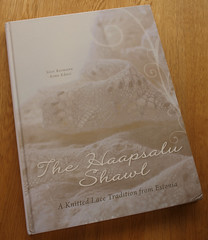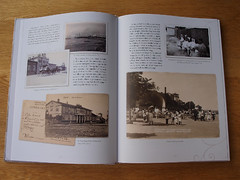I’m going to come straight out and say it: this is my favourite knitting book, ever. Not only does it have beautiful photography and styling that you would expect to see in a coffee table book, it also has wonderfully clear knitting instructions and charts for knitting your own versions of these beautiful shawls.
The book is split into three sections: the history of the Haapsalu shawl, “Teaching the Traditions”, and the stitch patterns.
The history section covers the beginnings of shawl knitting in Haapsalu (a small town in Estonia), for sale to wealthy Russian holidaymakers, and then how the tradition continued through two World Wars and Communism up to the present day.
“Teaching the Traditions” tells you everything you need to know about how to knit your own shawl describing yarns, needles, calculating stitch counts for casting on, reading charts, and how to knit and attach the lace edging (which, traditionally, is sewn on rather than knitted on).
Then there are the stitch patterns and, if you didn’t look at any of the other information in the book, it would still be worth buying the books just for these. There are more than 100 separate stitch patterns given and each one gets its own page with a crystal clear photograph of a swatch and its chart. There are 9 lace edgings included too, also with photographs and charts. There are no written instructions for the patterns so you do have to be comfortable reading charts. The charts use slightly different symbols to those that I’m used to seeing (and using) in patterns but a full key is given and I haven’t had any problems following them.
The patterns themselves are beautiful and frequently complex. Some include nupps (little bobbles) and manipulated stitches but some involve nothing more complicated than yarn-overs, k2tog and ssk. It would take a certain amount of courage to cast on for one of these shawls without having knitted any lace previously but if you’ve got a couple of shawls under your belt, you will find plenty to inspire and challenge you here!


